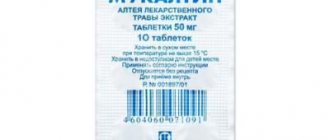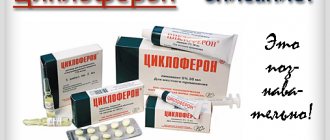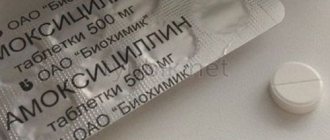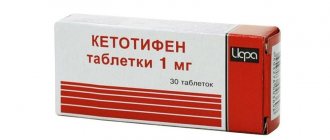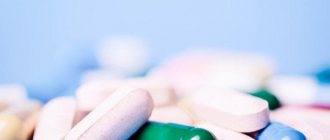Contraindications and overdose
The drug is prescribed exclusively by the attending physician. Used for preventive purposes against dysbiosis of the gastrointestinal tract, which has the following symptoms:
- Stool disorders in the form of diarrhea or constipation;
- Disturbances in the functioning of the digestive tract manifested in the form of dyspepsia;
- Nausea, dizziness, vomiting;
- Belching, vomiting;
- Bloating, flatulence;
- Skin rashes, manifestations of an allergic reaction;
- Pain in the abdominal cavity.
One of the contraindications is the body's hypersensitivity to individual components of the drug composition.
https://www.youtube.com/watch?v=q7oLaB98XJI
Linek should not be taken for various forms of diabetes due to the sugar content.
The drug is used with great caution when the immune defense is weak, which has been destroyed by dangerous diseases, for example, HIV infection. There have been no cases of overdose with this drug.
Linex is an ideal drug for the treatment of dysbiosis. But using the drug on your own is contraindicated.
Be sure to contact your doctor with complaints; he will carefully examine the clinical picture, establish an accurate diagnosis and find out the provoking causes.
Based on the results obtained, the doctor will prescribe the correct course of treatment. You cannot self-medicate.
The reasons for prescribing a eubiotic drug are:
- Prevention of intestinal microflora disorders, especially when the patient is forced to receive long-term drug treatment for various inflammatory diseases of internal organs. Linex is prescribed simultaneously with antibacterial agents, or immediately after the end of antibacterial therapy.
- A course of Linex is prescribed for dysbiosis caused by taking antibiotics, antiviral drugs, or a course of chemotherapy treatment for the treatment of malignant tumors.
- Manifestations of intestinal dyspeptic disorders in breastfed children.
- It is recommended for children and adults to take Linex with increased formation of intestinal gases, constipation, and diarrhea.
The only clinical contraindication to prescribing a course of treatment with Linex is the presence of an individual intolerance reaction to the incoming microbiological components of the drug, intolerance to dairy products.
Linex capsules instructions for use
A special feature of Linex capsules is their composition. A component of this product is lactose. This means that people who have galactose intolerance, lactase deficiency or impaired absorption of glucose-galactose are not recommended to use this drug for treatment.
The instructions for using Linex capsules are quite simple. The drug is taken orally after meals. Take the capsule with a small amount of water. Adults are prescribed to drink, 2 capsules 3 times a day. The number of times the medication is used per day is calculated based on the severity of the disease. The time to use the medicine is considered based on personal factors: the possible causes of the disease, the general health of the body at the moment and the individual characteristics of the body are assessed.
The drug is prescribed not only for the treatment and prevention of intestinal dysbiosis in adults and children, but also for vaginal dysbiosis in women, as well as for gastroenterocolitis in chronic and acute conditions of the disease. It is also recommended for use during treatment with antibiotics, for prophylactic purposes, in order to protect against the side effects of antibiotics on the intestines and its microflora, prescribed due to illness.
The importance of beneficial microflora
The human body is inhabited by millions of different bacteria. Most colonize the gastrointestinal tract. The entire biocenosis is in balance with each other. Beneficial ones prevail, reducing the activity and growth of opportunistic pathogens. The value of normal microflora:
- takes part in the digestion of food;
- helps in the synthesis of vitamins (K);
- participates in the inactivation of a number of enzymes;
- affects the rate of red blood cell renewal;
- affects the circulation of bile acids.
In the gastrointestinal tract, flora actively colonizes the mucous membranes. In a healthy person, it is represented by bifidobacteria and lactobacilli. A newborn baby has a sterile intestine for the first 20 hours. Then active settlement begins for 2–4 days. Complete stabilization of normal flora in children occurs up to 2 years. In an adult, the composition usually differs due to the nature of the diet.
Eubiotics include drugs and some food products containing living microorganisms:
- Lactobacilli.
- Bifidobacteria.
- Some strains of E. coli.
- Enterococci.
These microorganisms help cope with dysbiosis - a pathological condition caused by an imbalance between normal microflora and pathological, or conditionally pathogenic. This imbalance is the root cause of many fairly common conditions:
- Digestive system disorders - nausea, vomiting, increased gas formation, constipation, diarrhea.
- Allergic reactions.
- The emergence of foci of chronic infection.
- Disturbances in the processes of absorption of nutrients and vitamins necessary for the body, resulting in pathological changes in metabolism, hypo- and vitamin deficiencies, and electrolyte imbalances occur.
- The occurrence of secondary immunodeficiency conditions.
- The appearance of tumor pathology.
Duration of therapy in adults
On average, it is recommended that adults take Linex for 14 days . When determining the duration, you should focus on the rate of disappearance of clinical symptoms and improvement in general well-being. Also, the course of treatment with Linex largely depends on the severity of the disease and the cause of the development of dysbacteriosis. The safety of the drug allows repeated dosing for 7-14 days for prophylaxis throughout the year, taking breaks of 4-5 weeks between courses.
Linex is approved for use during antibiotic treatment. The extent of damage done to the intestinal flora depends on how long it lasts. After completing the course of therapy, patients drink Linex for at least 5 days to consolidate the effect.
Recommendations for taking Linex:
- the greatest effect from a course of treatment with Linex is achieved when taken after meals;
- Do not take capsules with hot drinks to avoid the death of living bacteria;
- during treatment with antibiotics, it is necessary to observe a 3-hour interval between doses of drugs;
- It is forbidden to drink Linex with alcohol that can destroy the active components;
- For children who are unable to swallow the capsule, open it and dissolve the contents in warm liquid.
Causes of microflora imbalance
Dysbacteriosis develops when there is a disturbance in the balance of the biocenosis. The conditions for the formation of such a state are as follows:
- long-term use of antibacterial drugs (two weeks or more);
- severe pathologies of the gastrointestinal tract;
- food intoxication;
- current immunodeficiency;
- poor nutrition;
- stress factor.
Ignoring the treatment of dysbiosis increases the risk of developing colitis, diathesis, anemia, and fungal diseases. A minimal amount of normal microflora leads to decreased immunity. Children develop allergic reactions, diathesis, and dermatitis of various natures.
With the development of the pharmacological industry, the emergence of new infections and, accordingly, new, more effective antiviral and antibacterial drugs, the problem of dysbiosis is very relevant.
The causes of disturbances in the normal microflora are:
- Long-term, uncontrolled use of antibacterial and antiviral drugs.
- Primary immunodeficiency conditions.
- Diseases, congenital or acquired, accompanied by insufficient enzymatic activity.
- Chronic stress reactions, environmental deterioration, poor nutrition, impact of man-made factors on health.
Causes of malfunction of the gastrointestinal tract
The following factors may be the reasons for the disturbance of balanced microflora:
- Antibiotic-associated diarrhea;
- Infectious diarrhea;
- Taking hormonal drugs;
- Chemotherapy;
- Ulcerative colitis;
- Gastritis, pancreatitis, cholecystitis, etc.;
- Chronic enteritis;
- Irritable bowel syndrome;
- Allergies;
- Functional age-related changes in the gastrointestinal tract.
Treatment of disorders of normal microflora with probiotics
Probiotics are bacteria that do not cause the development of pathologies, but help the body restore damaged microflora.
Each type of bacteria has a significant number of strains that have different effects on human internal organs. There are strains of lactobacilli that help absorb lactose contained in natural milk, support immunity, and help digest food throughout the gastrointestinal tract.
The following microorganisms are considered probiotics:
- lactobacilli;
- bifidobacteria;
- yeast fungi;
- lactic acid bacteria.
Microorganisms are included in different dosage forms in different proportions. Some preparations contain only one type of probiotic. In accordance with the lack of a certain microorganism in the intestines, this type of probiotic is taken.
Many probiotics effectively relieve inflammatory processes in the gastrointestinal tract.
One of the popular and effective medicinal probiotics is Linex. The drug is resistant to the acidic environment of the stomach, is not destroyed by antibiotics, and affects the lower and upper intestines.
Linex composition
The combined drug "Linex" is available in the form of opaque capsules for oral administration. Composition of each capsule: active lebenin powder, consisting of three types of lyophilized lactic acid bacteria. The capsule contains more than 12 million live bacteria.
Lyophilization technology involves drying the powder and then freezing it. Sublimation is carried out in a vacuum chamber. Such production ensures the preservation of the dispersed phase and preserves the biological activity of bacteria.
Description of the drug Linex
In order to maintain the biocenosis, they came up with pro and prebiotics. Taking such medications helps restore flora within a short period of time. Similar medications include Linex. Sold in capsule form, available without a doctor's prescription.
Compound
The main component is a powder called Lebenin. 1 gram contains:
- lacto- and bifidobacteria;
- enterococci.
In addition to the active substance, Linex contains additional ones. Unlike other medications, they play an important role. These include lactose, which takes part in the suppression of pathogenic flora.
The capsule does not dissolve when it enters the oral cavity and stomach. The main therapeutic effect is formed in the intestines. The flora is restored as follows:
- First, fermentation of lactose develops, which leads to a shift in pH to the acidic side.
- This contributes to a pronounced inhibition of pathogen growth.
- When their activity decreases, beneficial lacto, bifido, and enterococci develop.
Additionally, its own flora produces a number of antibacterial substances.
Indications
Linex for dysbiosis is prescribed when a number of symptoms appear. An imbalance of microflora is accompanied by:
- alternating constipation and diarrhea;
- bloating after eating;
- feeling of discomfort;
- sometimes nausea, vomiting.
The main symptom is dyspepsia. Linex is also taken for long-term allergies, against the background of antibiotic therapy. Added to the complex treatment of colitis and enteritis.
Contraindications
Safe for pregnant women and during breastfeeding. Despite its complete harmlessness, not everyone is allowed to take it. Prohibited:
- if you have an allergic reaction to the drug;
- against the background of dairy intolerance.
In this case, dysbiosis can be treated with other probiotics.
Peculiarities
Linex is a drug that has minor side effects. In addition, its main characteristics include:
- minimum list of contraindications;
- zero probability of developing an overdose;
- compatibility with other medications.
Also, Linex against the background of dysbacteriosis is allowed for children from birth.
Linex is a drug that includes compounds of various bifidobacteria, non-pathogenic enterococci and lactobacilli. When it acts on a small organism, the drug recognizes the characteristics of ongoing indigestion, identifies the causes of dysbiosis and has a beneficial effect, softening painful sensations and completely eliminating them.
The drug has the ability not only to neutralize painful discomfort in the stomach, but also to cure dysbiosis in a short period of time.
In addition, the medication helps reduce the baby’s body’s susceptibility to the effects of infectious pathogenic bacteria.
Linex is sold in a package that contains 10 sachets. Each stick contains 1.5 grams of medicinal powder. The internal content of the active component can be either snow-white or speckled, and also have a dull gray tint.
Linex belongs to the group of third generation drugs. It contains the following components:
- Lactobacillus acidophilus - these substances are often located in the human intestines. They prefer an acidic pH environment, which causes the bacteria to stimulate the production of such acidity in the intestines. The process is carried out due to the removal of lactic acid, which provokes the elimination of pathogenic bacteria sensitive to high acidity.
- Enterococci - they are in the digestive tract of any person. They promote active fermentation without causing the release of gases. They have increased endurance, which helps in the fight against pathogens.
- Bifidobacterium - helps to establish an acidic environment in the intestines.
https://www.youtube.com/watch?v=GscP5XocXWY
Excipients are additionally added to the main active components. They help enhance the activity of the main ingredients. These substances are represented by the following composition:
- titanium dioxide;
- gelatin;
- Magnesium stearate.
Methylhydroxybenzoate and propylhydroxybenzoate are also present in small amounts.
Compound
Composition and release forms
Linex is a medication that is involved in regulating the balance of intestinal microflora.
Linex is produced in a variety of forms for internal use:
- These could be capsules.
- Another form of release is Linex-Forte capsules.
- In powder form, packaged in sachets. Children's Linex is produced mainly in powder form. Each pack contains 10 and 20 sachets weighing 1.5 g.
The main component is swan (280 mg per capsule).
Each sachet contains:
- Enterobacteriaceae – 300 mg.
- Bifidobacteria – 300 mg.
- Lactobacilli – 300 mg.
- Auxiliary components in the form of potato starch and lactose.
Packaging components:
- Aluminum blisters.
- Cardboard packaging that holds capsules in various quantities.
- Dark glass bottles.
Linex - reviews of use in the treatment of dysbiosis
Linex is a probiotic. Consists of a number of species of bacteria, representatives of the normal intestinal flora. It is used at the stage of restoration of microflora after the preliminary destruction of pathogenic species. Taking Linex exclusively for dysbacteriosis is useless. The drug becomes part of a comprehensive treatment.
Lactic acid produced by probiotic strains inhibits the development of pathogenic flora and is a good remedy against dysbiosis. Let's talk about the components of the medicine - it is interesting to understand what the drug is intended for and what explains the positive effect of use. Russian-language sources are extremely poor in detailed scientific information.
Composition of Linex
Any reference book will contain information about whether the medicine belongs to group K63.8.0. This is of interest, because Russian sources classify dysbacteriosis as a member of the K59.9 subgroup. Each group includes a large number of drugs aimed at eliminating a specific pathology. Approximate composition (without excipients) of the drug Linex:
- Bifidobacterium infantis strain.
- Lactobacillus acidophilus strain.
- Enterococcus faecium strain.
The bottle contains lactobacilli, bifidobacteria and enterococci, three common families of intestinal cultures.
Bacteria are used to produce acidophilus and are actively used as part of other drugs for the treatment of dysbacteriosis. The bacterium is common among normal microflora; the main feature is the ability of lactobacilli to decompose lactose to lactic acid. By regulating the pH factor, the proliferation of pathogenic strains is greatly suppressed.
Lactose is milk sugar, a conglomerate of the simplest carbohydrates - galactose and glucose. Linex already contains lactose in its composition, in small quantities. Therefore, it is not forbidden to drink the contents with milk to achieve the full effect.
Lactobacilli are destroyed by heat or direct sunlight. By increasing the acidity of the environment, microorganisms suppress pathogenic life forms:
- Proteas.
- Staphylococci.
- Enteropathogenic Escherichia coli.
Clinical trial results are published regularly by the Mayo Clinic. The positive effectiveness of the strain varies from zero to maximum readings. The bacillus works against some vaginal infections.
Regular intake of yoghurts with Lactobacillus acidophilus reduces the frequency of diarrhea in children and causes positive changes in the blood of patients with small intestinal dysbiosis. But most importantly, it helps people with lactose intolerance digest lactose.
This includes most adults.
Bacteria allow people suffering from flatulence to eat specific yogurt. Patients will benefit from taking Linex for obvious reasons - the building material is intended for bacteria. Possible contraindications. There is a risk of bacteria entering the blood, which is undesirable. People with:
- Central venous catheters.
- Diseases of the heart valves.
- Short bowel syndrome.
- Weakened immunity.
Linex should be given to premature babies with caution.
The mentioned gram-positive bacteria are present in the human gastrointestinal tract, being one of 32 species of the genus Bifidobacterium. They are resistant to air in small portions and are considered early colonizers of the mucous membranes of newborns.
When grown in an anaerobic environment, they form shiny, convex white colonies.
Infantis are present in small numbers in the adult gastrointestinal tract, are considered part of the intestinal flora, and produce lactic acid, the main purpose of bacteria to prevent the growth of pathogens. Infantis are non-pathogenic and are often added to foods.
Coincidences are observed in 97% of cases. The appearance is similar; in a joint colony, the observer is unable to identify a separate phenotype.
Probiotic activity varies among the three species included in longum, and debate about the distinction continues.
Bifidobacteria make up the lion's share of the intestinal biota. To the surprise of scientists, some longum strains have been discovered that have high tolerance to the acidity of gastric juice and bile.
The latter have strong electrostatic charges, causing adhesion to the epithelium.
https://www.youtube.com/watch?v=EErBxqybTUA
The bond strength is enhanced by fatty acids (lipoteichoic acid). Infantis eat a varied diet and break down oligosaccharides. Bacteria ferment the gum, exhibiting a unique quality compared to other organisms. Bacteria complete the decomposition of amino acids with the help of special enzymes; unlike the previous group, they do not need to be fed with lactose.
Longum is used in the form of live bacteria to treat ulcerative colitis. The technique is patented. Used to regulate the immune system. The ability of bacteria to reduce the duration and severity of symptoms associated with colds and flu was unexpected.
They form part of healthy microflora, but can be pathogenic. Causes meningitis and endocarditis. Like the previous two types, Linex produces lactic acid to prevent dysbiosis. They are highly resistant to adverse external factors. Often used for the production of lactic acid products.
The action of Linex is based on two factors. The course of treatment is intended to:
- Stabilize the pH factor for the propagation of normal microflora by producing lactic acid by strains.
- Repopulate empty spaces with the normally present species listed above.
Linex is taken as a probiotic for dysbacteriosis.
Many young mothers, having suffered from constant colic and dysbacteriosis, resort to the use of various remedies. Having tried different drugs and convinced of the absence of a positive effect, they begin to be interested in reviews that have previously gone through this difficult period.
Larisa, 5-month-old child: “We started to feel terrible when we were 3 weeks old. The son constantly screamed, strained, and could not fart. If feces came out, it was in one gulp and mixed with green and very liquid. The pediatrician prescribed us to take 1 capsule of Linex. We drank the entire course. The child has improved significantly, we no longer yell at night and all day long. Sometimes it happens, but I help the baby by additionally placing a warm diaper on his tummy. I am pleased with the results of the medicine.”
Irina, 3-month-old child: “Even in the maternity hospital, our tummy started to hurt badly. We were immediately recommended to use Linex daily for 14 days. We did everything as recommended by the doctor, and the colic gradually stopped completely. After 1 month, the pediatrician advised me to take the medicine again as a preventative measure. Since then, I have forgotten what dysbiosis and stomach pain in a baby are, and we sleep peacefully at night.”
Marina, a 9-month-old child: “My daughter caught a cold in her ears, I don’t know how I overlooked it, although I always dressed warmly. To treat otitis media we needed to take antibiotics. After using them, we started having problems with dysbiosis. For treatment, we were prescribed treatment with Linex. We drank it and everything returned to normal. Therapy helped us."
Thus, the use of Linex for newborns is allowed from the first days of life. The medicine helps to normalize all ongoing processes and regulate the functioning of the digestive organs. To take it, you should know what the correct dosage is for the child, and carry out treatment only based on the doctor’s recommendation.
You can learn more about dysbiosis from the video.
Lactic acid produced by probiotic strains inhibits the development of pathogenic flora and is a good remedy against dysbiosis. Let's talk about the components of the medicine - it is interesting to understand what the drug is intended for and what explains the positive effect of use. Russian-language sources are extremely poor in detailed scientific information.
Elena Malygina, 26 years old, Moscow
I developed diarrhea while taking antibiotics. The doctor recommended this medication to me. I used it for two weeks and all the symptoms went away. Now I'm monitoring my bowel movements.
Daria Furletova, 34 years old, St. Petersburg
There was no opportunity to go to the doctor. Diarrhea began after a sharp transition to a different diet and diet. After reading reviews on the Internet, I bought Linex. I took two capsules three times a day. I no longer suffer from this scourge.
Ksenia Medvedko, 26 years old, Novorossiysk
The child started having tummy problems when he was two years old. Bloating and diarrhea appeared. The doctor recommended Linex. I broke the capsule and dissolved its contents in water. After a few days, it became much better.
Linex is a popular drug that normalizes intestinal microflora.
Due to its ease of use and high efficiency, this drug is widely used in gastroenterological practice.
The drug belongs to the group of eubiotics, a subgroup of combined medications containing more than one type of probiotic microorganisms.
Instructions
Let's try to figure out what kind of medicine this is and when it is appropriate to use it. So, the drug is produced in white capsules.
One capsule contains more than 12 million live lactic acid bacteria, which have been dried by freezing in a vacuum (lyophilization).
In addition to the main component of lebenin powder, among the beneficial bacteria in the composition of the drug, the following three representatives of normal intestinal microflora can be distinguished:
- Lactobacillus acidophilus is an inhabitant of the small intestine.
- Bifidobacterium infantis is an inhabitant of the large intestine.
- Enterococcus faecium is an inhabitant of the small intestine that potentiates the action of the two listed above
Drug interactions
Many patients wonder: how to properly take Linex with antibiotics so that the drug is truly effective? After all, the action of some antimicrobial compounds eliminates the positive work of the complex of beneficial bacteria. The manufacturer is in a hurry to reassure patients: taking the medication simultaneously with antibiotics does not reduce the effectiveness of therapy.
What other information should you pay attention to before taking Linex Forte? This medicine can be combined with antibiotics - you already know about this. But due to the fact that it is used only once a day, the manufacturer recommends dividing the use of these medications. Take the capsule with breakfast and postpone the use of antimicrobials until lunch and evening, or vice versa.
The instructions say that the medication is well accepted by the human body. However, hypersensitivity reactions are possible: be attentive to yourself. If you feel worse after using the probiotic (fever, abdominal pain, or traces of blood in your stool), consult your doctor immediately.
Many patients report that before taking Linex with antibiotics, they were worried about wasting money. After all, it seemed to them that such a combination would be useless and would lead to the death of beneficial bacteria and the ineffectiveness of the drug. But the outcome was always positive.
After just 2-3 days of regular use, patients felt much better. Their digestion returned to normal, their appetite appeared, and the excruciating pain in their stomach went away. The drug also eliminates increased gas formation due to the balance of beneficial microorganisms. Statistics show that 9 out of 10 consumers are satisfied with the treatment.
From the article you learned about how to properly take drugs from the Linex line simultaneously with antibiotics, and in what situations this is necessary. Remember that all antimicrobial compounds should be prescribed exclusively by a doctor. When receiving such a recommendation, check whether you need Linex. Best wishes!
After you finish taking antibiotics, instead of Linex, which is a fairly expensive drug, you can take simpler probiotics. But it should be remembered that there should be a gap of at least two hours between taking the antibiotic and the probiotic. That is, Linex is taken 2-2.5 hours after the antibacterial drug.
It is known that antibiotics are powerless against viruses. When, what antibiotics, what course, for what diseases - write down. This is especially true for children taking medications. The use of antibiotics significantly speeds up recovery, but this is not always justified.
For some diseases, it is ideal when it is possible to undergo bacterial culture tests to determine sensitivity to antibiotics. When laboratory data is available, the selection of an antibiotic is simplified and in this case the treatment is obtained with sniper precision. Always leave equal intervals between antibiotic doses. If you start a course of antibiotics, under no circumstances should you stop treatment as soon as you feel better.
You should also monitor the effect of the antibiotic. If no improvement is observed within 72 hours, then the pathogen is resistant to this antibiotic and it should be replaced.
It is better to take these drugs in between taking antimicrobial agents. Taking antibiotics inhibits liver function, therefore, food should not put too much strain on the liver.
Taking probiotics can reduce the risk of antibiotic-associated diarrhea and intestinal dysbiosis. During chemotherapy, both are definitely prescribed at once. from the first day of therapy. I would add one more rule: always, before prescribing antimicrobial drugs, conduct a study to determine the sensitivity of microorganisms to antibiotics.
I also always believed that you should drink only water. But recently, several times we have taken such antibiotics, where the instructions say - you can take them with juice or milk! And take it, for example, with meals. So you need to read the instructions carefully!
When taking antibiotics, it doesn’t matter what it is better to abstain from sex! I have an operation ahead of me, after which I will be prescribed antibiotics again. Are there any recommendations for the minimum time between doses of different antibiotics? Hello. I have the flu now. The doctor prescribed an antibiotic. Space AB in time with dairy products in the diet. Linex®: should be taken after meals with a small amount of liquid.
Antibiotics will soon not be able to defeat diseases: people abuse these drugs so much that they negate their therapeutic effect. Many people self-prescribe antibiotics. As soon as they have a sore throat, cough, or runny nose, they immediately go to the pharmacy to buy antibacterial agents. After all, there are no antibiotics that can destroy viruses.
This often happens: patients who are prescribed antibiotics take them for several days, and then, as soon as they feel better, they stop treatment. If the patient starts taking antibiotics, they should definitely take the entire course (if you are allergic to the drug, you should consult a doctor so that he can prescribe a different antibiotic).
As an example, let's take chloramphenicol, which is often taken for intestinal disorders. If it is taken incorrectly (one or two days), it is dangerous not only due to the appearance of resistant bacteria, but also due to possible blood diseases (leukemia). Any antibiotic kills all bacteria that are in the body (including beneficial ones).
Therefore, from the first day of antibiotic therapy, you need to take probiotics (substances that protect the beneficial microflora of the gastrointestinal tract). For this purpose, we recommend the drug Linex to patients of our institute. At the same time, you also need to take prebiotics (substances that help the probiotic work so that it does not transit through the intestines).
It should also be remembered that we use antibiotics not only in the form of medicines: chemical preservatives (the same antibiotics) are added to almost all products that are sold in stores. Treatment of sore throat, pneumonia, bronchitis and some other colds requires a mandatory course of antibiotics.
We suggest you read: How can I stop drinking?
Since antibacterial agents destroy beneficial bacteria in the body, you need to take probiotics and consume fermented milk products (separate from taking antibiotics). Thanks to such components, Linex can compensate for the lack of beneficial bacteria in the intestinal flora, even when taken together with antibiotics. The basic rule is to use antibiotics only in cases where it is impossible to do without them.
As you know, not all bacteria that live in the human body are harmful. There are also beneficial types of microorganisms that have developed beneficial symbiotic relationships with humans. First of all, this applies to bacteria of the intestinal microflora. These bacteria feed on substances entering the intestines, producing organic acids, amino acids and vitamins that humans need.
The medicine should be taken after meals. The capsule is swallowed with plenty of liquid. When taking capsules, children may have difficulty swallowing the drug. If such a problem arises, you can open the capsule and pour the powder directly into a spoon. To prevent the powder from crumbling, it is better to mix it with liquid. The recommended dosage depends on age and type of drug.
How to take regular Linex? A single dose for children under 2 years old is 1 capsule, for children 2-12 years old - 1-2 capsules, for children over 12 years old - 2 capsules. The dose for adults is also 2 capsules. The drug must be taken three times a day.
Directions for use for Linex Forte:
- children under 2 years old - 1 capsule 1 time per day
- 2-12 years – 1 capsule 2 times a day
- over 12 years, adults – 1 capsule 3 times a day
When using Linex sachets for children, they must be opened, pour the powder into a cool or moderately warm liquid (up to 35 ºC) and drink.
Children under 7 years old need 1 sachet per day. Children over 7 years old – 2 sachets per day.
The duration of treatment depends on the cause of dysbacteriosis. In most cases, treatment can be completed after stool has been restored and the unpleasant symptoms of intestinal disorder have disappeared. However, if there is no improvement within three days, you should stop taking the drug and consult a doctor.
It is not recommended to take Linex simultaneously with hot liquids and alcohol.
Taking Linex goes well with the use of antibiotics and chemotherapy.
Prescribed in combination to maintain microflora.
You must be careful when using Linex with the antibiotic Amoxiclav.
An interval between doses should be at least 2 hours so that the bacterial environment of Linex does not die under the influence of the antibiotic, without fulfilling its purpose.
Accordingly, Amoxiclav is taken first, and after time, Linex should be used.
Mechanism of action
Lactic acid bacteria and cocci contained in capsules of the combined drug Linex are the most important representatives of the microflora of a healthy intestinal biocenosis.
- Taking Linex for dysbacteriosis promotes rapid restoration of disturbed intestinal microflora.
- The beneficial lactic acid microbes that make up the drug have a pronounced antagonistic effect on many conditionally and definitely pathogenic microorganisms: by increasing the acidity of the intestinal environment, they prevent their proliferation.
- The presence of beneficial bacteria is a prerequisite for the synthesis of vitamins B, K, E, folic acid, and biotin.
- They have an immunostimulating effect.
- Necessary for the successful functioning of digestive enzymes, they regulate the supply and absorption of micro- and macroelements, and contribute to the normal functioning of the digestive organs.
- Representatives of normal microflora are necessary for proper digestion of food, fermentation of proteins, fat, and carbohydrates.
- They play a key role in the proper absorption of food by young children during breastfeeding.
Terms of use
Many patients using probiotics for the first time are wondering how to take Linex: before meals or after? The rules of administration depend on the dosage form, indications for use and the age of the person.
The dietary supplement is available in several dosage forms: capsules, drops, powder. Linex should be taken with meals , since food intake reduces the aggressiveness of hydrochloric acid in gastric juice, and more lactic acid bacteria reach their destination in the intestines. You can take the drug with a variety of drinks, including juice, sugared water, and compotes. The basic rule is that the liquid should not be hot. It is prohibited to drink alcohol at the same time as Linex.
Peculiarities
Linex for dysbacteriosis is considered one of the most popular drugs prescribed when the balance between beneficial and pathogenic microflora is disturbed.
Immediately after the baby is born, his intestines are populated with maternal bacteria, allowing him to regulate the proper functioning of the entire digestive tract.
During their life, beneficial microorganisms can die, then pathogens begin to multiply rapidly, causing stool disorders, severe flatulence and other problems.
The medication belongs to the group of probiotic (eubiotic) drugs that eliminate dysbiosis caused by various reasons.
Initially, the drug was produced in the following forms:
- bags for children;
- capsules.
They contained the following active components:
- Lactobacilli.
- Bifidobacteria.
- Enterococcus faecium.
Today you can buy Forte capsules at the pharmacy, which have some differences:
- they do not include the last component;
- the concentration of the first two types is increased 100 times;
- strains of lacto- and bifidobacteria are different.
Microorganisms are part of the normal human microflora and live in different parts of the intestine.
Once in the body, they colonize the intestines and change the pH level to the acidic side, thus inhibiting the growth of opportunistic inhabitants for which such an environment is unfavorable for reproduction.
By maintaining the required ratio of beneficial and harmful bacteria, the product allows you to cope with symptoms such as:
- bloating;
- nausea and vomiting;
- heaviness and rumbling after eating;
- constipation or diarrhea;
- abdominal pain;
- Frequent regurgitation in babies.
In addition, lactic acid bacteria are involved in the synthesis of useful substances such as enzymes, vitamins, bile acids and produce substances with antiseptic properties.
The course of treatment allows you to achieve in children and adults:
- Significant improvement in the functioning of the digestive system.
- Eliminate problems with stool.
- Increasing resistance to infections.
In addition to intestinal dysbiosis, the probiotic can be used for a similar problem in the vagina or as part of complex therapy for candidiasis.
It is often prescribed to patients undergoing chemotherapy and antibiotic treatment.
The medication is quite safe, so it can be used by all groups of people, including pregnant, lactating women and children under 1 year of age.
Exceptions are persons with intolerance to dairy products and auxiliary components.
Manufacturers in the official instructions report that the drug is well tolerated, however, numerous patient reviews indicate frequent cases of the development of urticaria.
It is unknown what exactly such a local allergic reaction occurs to, but it could be:
- magnesium stearate;
- potato starch;
- lactose;
- propylhydroxybenzoate;
- titanium dioxide;
- methylhydroxybenzoate;
- gelatin.
All these components are used in the production of probiotics as excipients, including components of the capsule shell.
It is possible that an allergy may develop to lactic acid bacteria that undergo special treatment through drying.
The majority of patients did not report such problems, but noted a significant improvement in their well-being after the course of treatment.
special instructions
You should not take this medication without your doctor’s knowledge, especially if your child has the following unpleasant diseases:
- Chronic illnesses.
- AIDS.
- Syphilis, etc.
Among other things, the drug is contraindicated if the baby has a high body temperature, there is blood or mucus in the stool, diarrhea has been present for more than 2 days, which also gradually leads to dehydration, abdominal pain appears and body weight decreases.
In addition, you should perform the following important activities while taking Linex:
- Capsules are not washed down with hot liquid.
- Adults should not drink alcohol at the same time as taking the medicine.
- If taking Linex is accompanied by the appearance of diarrhea, then it is worth replenishing lost electrolytes and fluid in the body.
The drug must be stored in a dark and cool place; this is an important condition for maintaining the normal activity of bacteria inside the drug.
Linex and evidence-based medicine
The indication for taking Linex is dysbacteriosis. In countries with developed medical science, it has been proven that such a diagnosis does not exist. And the initial number of bacteria in the intestines depends on the genetic code of each person, the food he eats and his lifestyle. This means that taking this drug cannot cure a disease that does not exist.
The second indication for use is the prevention of the appearance of dysbiosis during antibiotic therapy. According to the study, taking antibiotics does not lead to the formation of dysbiosis, and diarrhea is associated with a side effect of a number of antibacterial drugs. It does not require treatment.
An example of this is people who take antibiotics for tuberculosis. Against the background of massive and long-term antibiotic therapy, their treatment complex does not include taking bifidobacteria and Linex. However, dysbiosis and diarrhea occur with the same frequency as in people who take a short course of antibiotics. According to statistics, this is 1 person per 300 patients.
Advantages of the drug
The advantage of Linex is that it has no side effects and does not cause allergic reactions. An overdose of the drug is also impossible, and there is no data on delayed complications.
How to take Linex for children
The dilution liquid should be warm, but not hot. Drops can be mixed in milk, compote, tea and taken with food. If the drink is hot, that is, above 35 degrees, then all the beneficial bacteria of the drug will be destroyed.
If a child is taking antibacterial agents, then Linex can be given only three hours after taking the antibiotic. In any case, this issue should be clarified with a doctor.
We recommend: Mustard plasters for coughs for children
Children who have had a high temperature for a long time, loose stools with mucus and symptoms of dehydration should wait to take Linex until they are examined by a doctor and make a conclusion.
After two years, children can switch to other forms of Linex - powder or capsules.
Rules for taking the drug during antibiotic therapy for adults
To ensure the maximum result of joint treatment, you should consult with specialists and do not try to independently change the course, dosage or refuse antibacterial drugs, or violate the correct regimen for using Linex. It is impossible to take both drugs in parallel, that is, independently of each other.
Is it possible to take Linex together with antibiotics?
It has been established that the use of Linex against the background of antibiotics does not reduce their effect and does not participate in the development of resistant strains of pathogenic microorganisms. It is important to consider that the probiotic only acts when it enters the intestines with food. This means that it is correct to take it during or immediately after finishing a meal.
Not all consumers pay attention to the fact that some antibiotics are also taken with food (for example, Amoxiclav). This is justified by the task of reducing the risk of negative effects on the gastrointestinal tract. You have to follow a mandatory schedule for the sequence of drug use and clearly determine what to drink first and what to drink later.
There are different options for how you can take Linex with antibiotics:
- start using Linex a week before the antibiotic and stop 7 days later;
- take a probiotic from the first day of prescription;
- wait until the end of the course of antibiotic therapy and treat with probiotics only if signs of dysbiosis appear.
Not a single instruction gives clear instructions. But the third option can be considered the most acceptable. After all, dysbiosis does not develop in all cases. Nothing irreparable will happen unless you start taking a probiotic immediately.
Is it possible to consider additional allergization of the body advisable?
Officials insist on maintaining a break between the use of the antibiotic and Linex: the first should be taken 3 hours before the probiotic (there is an opinion that 1.5-2 hours is enough). It is easier to decide on medications taken once a day. For example, take the full dose of Sumamed in the morning an hour before breakfast or 2 hours after, and add Linex to lunch and dinner.
Dosage regimens: doses and duration of treatment
The dose for an adult is determined by the instructions:
- Linex capsules should be taken 2 three times a day.
- When choosing Linex Forte, it is enough to drink one 2-3 times a day.
- In a sachet, the powder is diluted in a tablespoon of water and taken 2-3 times during meals.
If a probiotic is prescribed for the purpose of prevention (there are no symptoms of dysbiosis, but the patient is very afraid), then 1 Forte capsule per day is enough.
How long to continue therapy depends on the effectiveness. It is impossible to predict in advance how long it takes to restore the flora. The standard regimen requires adding another 7-10 days to the duration of taking the antibiotic, sometimes it takes a month.
additional information
There are quite a few different reviews about the effectiveness of taking Linex. Some patients doubt the benefits of the drug. Others emphasize tangible benefits. Perhaps the contraindications were not carefully read in the instructions, or the rules of administration were not followed. To do this, we will focus on the features.
Any form of the drug should not be taken with hot drinks (tea, coffee). Bacteria die at a temperature of 50 degrees, and the medicine becomes useless.
It is strictly not recommended to interrupt the course by drinking alcoholic beverages. Ethanol is an enemy of intestinal flora.
Linex is no exception to the general contraindications of probiotics for persons with hypersensitivity to the components and with congenital lactose intolerance. If diarrhea is often associated with the consumption of dairy products, then using the product is not recommended.
An allergic reaction when starting treatment simultaneously with antibiotic therapy is possible not to the probiotic, but to the drug.
The drug is not prohibited in any trimester of pregnancy or lactation. But women should consult their doctor first.
Particular attention is required when prescribing for immunodeficiency states (including AIDS) and for patients with diabetes mellitus.
If during therapy the following appeared:
- elevated temperature (38 degrees and above);
- pathological impurities in the stool (blood, pus, a lot of mucus),
then you need to see a doctor and talk about your symptoms.
With diarrhea lasting more than two days with frequent bowel movements, loss of fluid, doubts about dysbacteriosis arise. Rather, the symptoms are caused by the addition of an intestinal infection.
In case of increased sensitivity, you can choose probiotics from the group of less active Linex analogues:
- Hilak Forte is available in drops and sachets; it contains not live bacteria, but the aqueous substrate of their metabolism, including a beneficial strain of Escherichia coli, lactobacilli and enterococci. Contains lactose and flavoring additives. The product is contraindicated for persons with hypersensitivity. It is prescribed three times a day, the dosage is gradually reduced. Allowed from infancy.
- Acipol is a capsule preparation of kefir grains and live lactobacilli acidophilus in a gelatin shell. Indicated from three months, the capsule is opened and diluted like Linex.
- Bifiform - limited in antimicrobial action, includes bifidobacteria and enterococci, which quickly colonize the small and large intestines. Used to get rid of Helicobacter pylori infection. It does not contain lactose, so it is recommended for people with milk intolerance.
The urgent problem of antibiotic therapy in medicine has to be solved with the help of auxiliary probiotics. In order for the use to be appropriate and ensure results, you must first consult with your doctor, make sure that Linex is suitable, and take the drug correctly along with the main treatment.
The need to take antibiotics usually arises in the treatment of colds and other diseases of bacterial etiology. But a significant drawback of antibacterial therapy is the absolute lack of selectivity in antibiotic agents. That is, they have a detrimental effect not only on pathological, but also on beneficial bacteria in the human body. As a result, antibiotic treatment most often ends with serious disturbances in the natural microflora of the stomach and intestines. This is manifested by dysbacteriosis, which is characterized by all kinds of disorders of the gastrointestinal tract - nausea, vomiting, diarrhea, flatulence and others.
Today, such conditions are successfully treated with eubiotics - dietary supplements containing live bacteria and their metabolic products.
The drug Linex in the group of these drugs occupies one of the leading positions in popularity and effectiveness. Here we will tell you how to take Linex with antibiotics.

